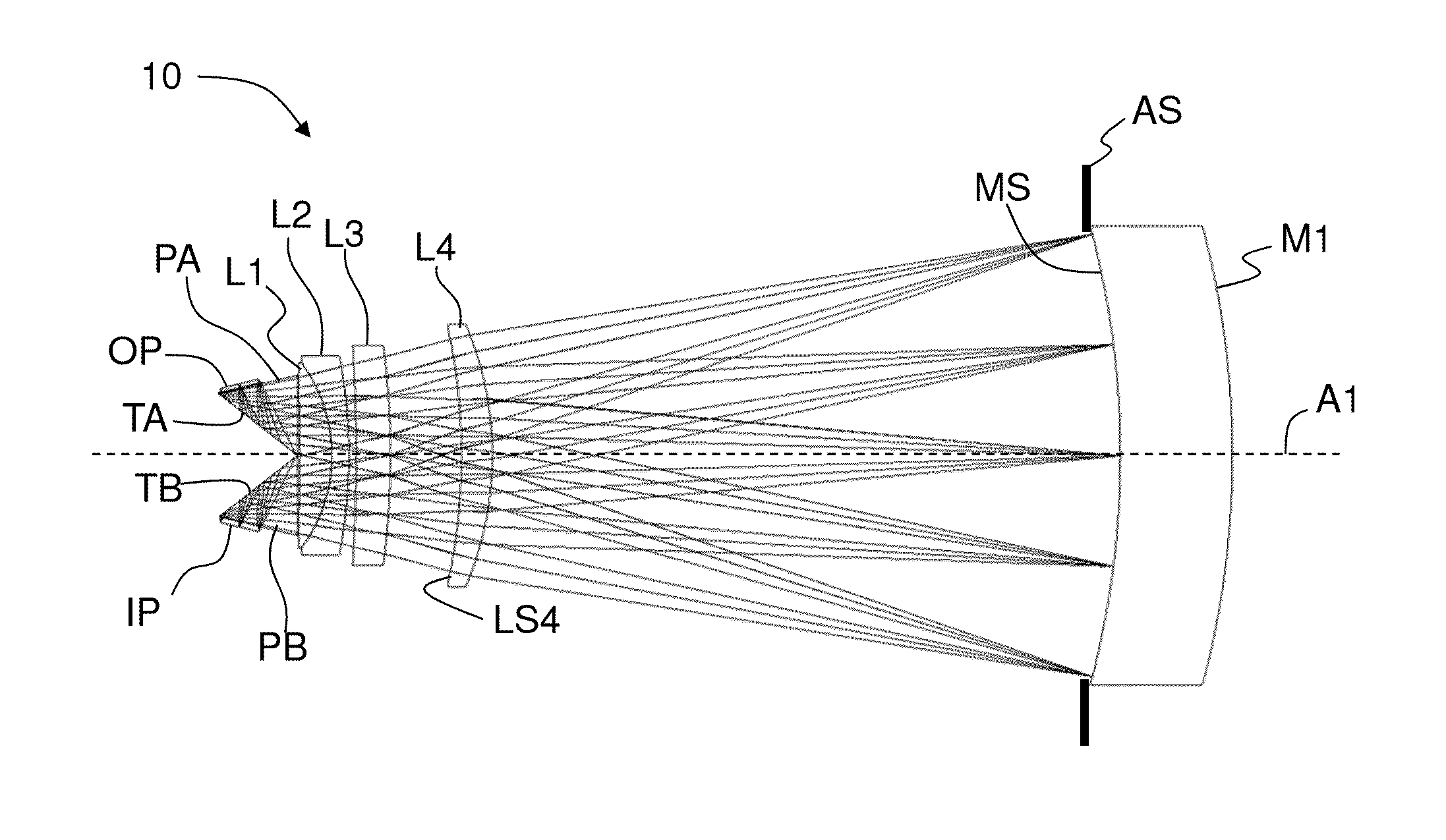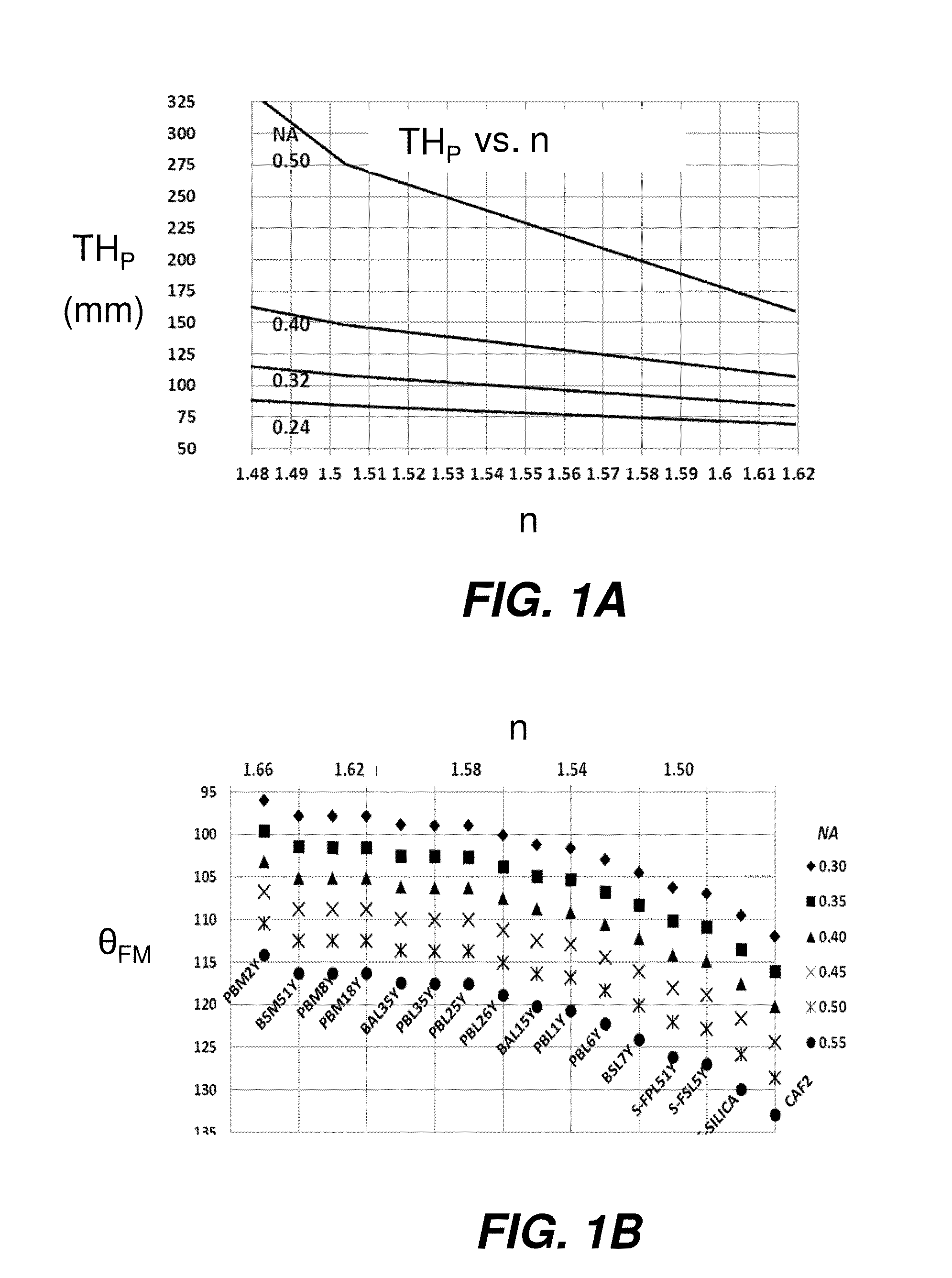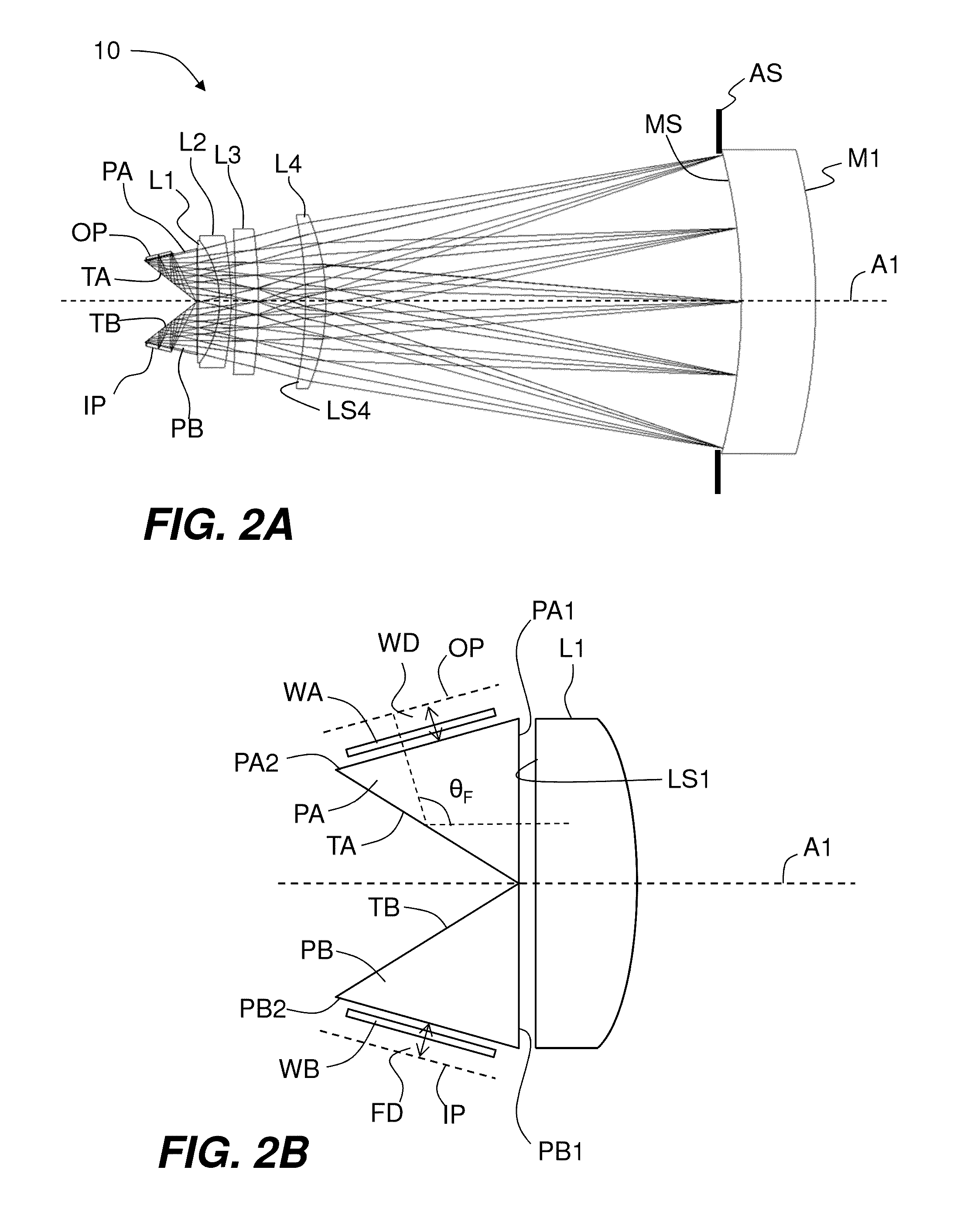Unit magnification large-format catadioptric lens for microlithography
a catadioptric lens, large-format technology, applied in the field of microlithography, can solve the problems of degrading not being able to alter magnification, etc., and achieve the effect of minimizing pattern overlay errors, allowing for very small magnification of the system, and reducing focus and/or image quality
- Summary
- Abstract
- Description
- Claims
- Application Information
AI Technical Summary
Benefits of technology
Problems solved by technology
Method used
Image
Examples
first example embodiment
[0078]FIG. 2A is a diagram of a first example embodiment of a 1× modified Wynn-Dyson catadioptric optical system (“system”) 10 according to the disclosure. The system 10 includes a primary concave mirror M1 centered on an optical axis A1. The minor M1 has a mirror surface MS. An aperture stop AS is located at mirror surface MS. The system 10 includes four refractive lens elements L1 through L4 arranged along axis Al on the concave side of minor M1 and axially spaced apart from mirror surface MS. The system 10 includes separation fold prisms (“prisms”) PA and PB that each reside adjacent lens L1 but on opposite sides of optical axis A1. The prisms PA and PB have respective TIR surfaces TA and TB that serve to fold system 10 so that an image plane IP and an object plane OP do not overlap on axis Al.
[0079]FIG. 2B is a close-up view of prisms PA and PB and the respective object and image planes OP and IP. The prism PA includes a planar surface PA1 adjacent a lens surface LS1 of lens ele...
second example embodiment
[0117]FIG. 11A is similar to FIG. 2A and illustrates a second example embodiment of system 10 that includes three air-spaced refractive lens elements L1, L2 and L3. The system 10 is configured to provide a six-die format at the i-line LED or GHI-s spectral bands. The field size is 102 mm×52 mm and has a transmission of 75% at the i-line wavelength. The working distance WD=6 mm. The system 10 includes the aforementioned windows WA and WB that in an example are 1 mm thick and made of fused silica. The fold angle θF is 103 degrees. The unfolded length is 1,417.5 mm. The aperture stop AS has a clear aperture of 749.8 mm, and primary minor M1 has a clear aperture of 780 mm and is 175 mm thick. The prism path length is 107 mm. The lens L3 has a concave surface LS3 that is aspheric. Minor surface MS is also aspheric. The NA=0.32. The back focus distance FD is essentially the same as in the working distance WD due to the system symmetry.
[0118]Table 5 sets forth an example lens-design prescr...
PUM
 Login to View More
Login to View More Abstract
Description
Claims
Application Information
 Login to View More
Login to View More - R&D
- Intellectual Property
- Life Sciences
- Materials
- Tech Scout
- Unparalleled Data Quality
- Higher Quality Content
- 60% Fewer Hallucinations
Browse by: Latest US Patents, China's latest patents, Technical Efficacy Thesaurus, Application Domain, Technology Topic, Popular Technical Reports.
© 2025 PatSnap. All rights reserved.Legal|Privacy policy|Modern Slavery Act Transparency Statement|Sitemap|About US| Contact US: help@patsnap.com



